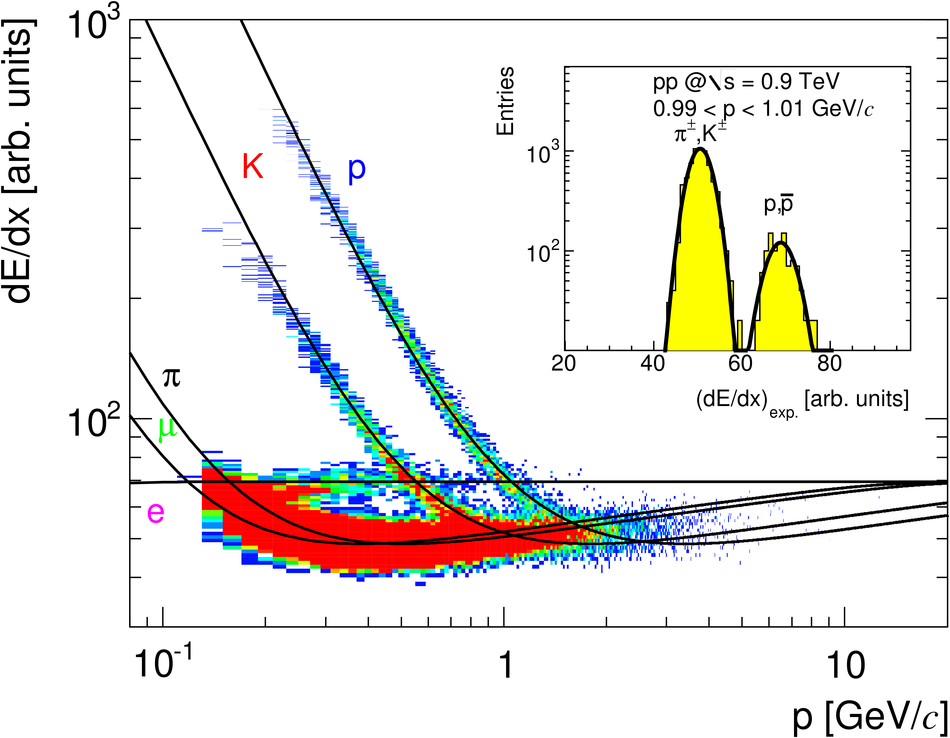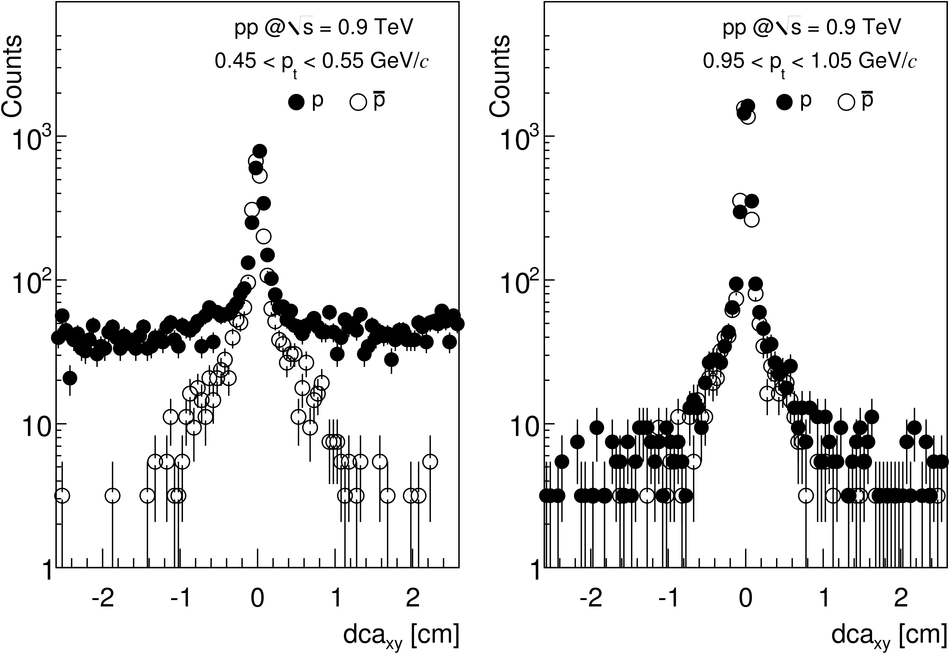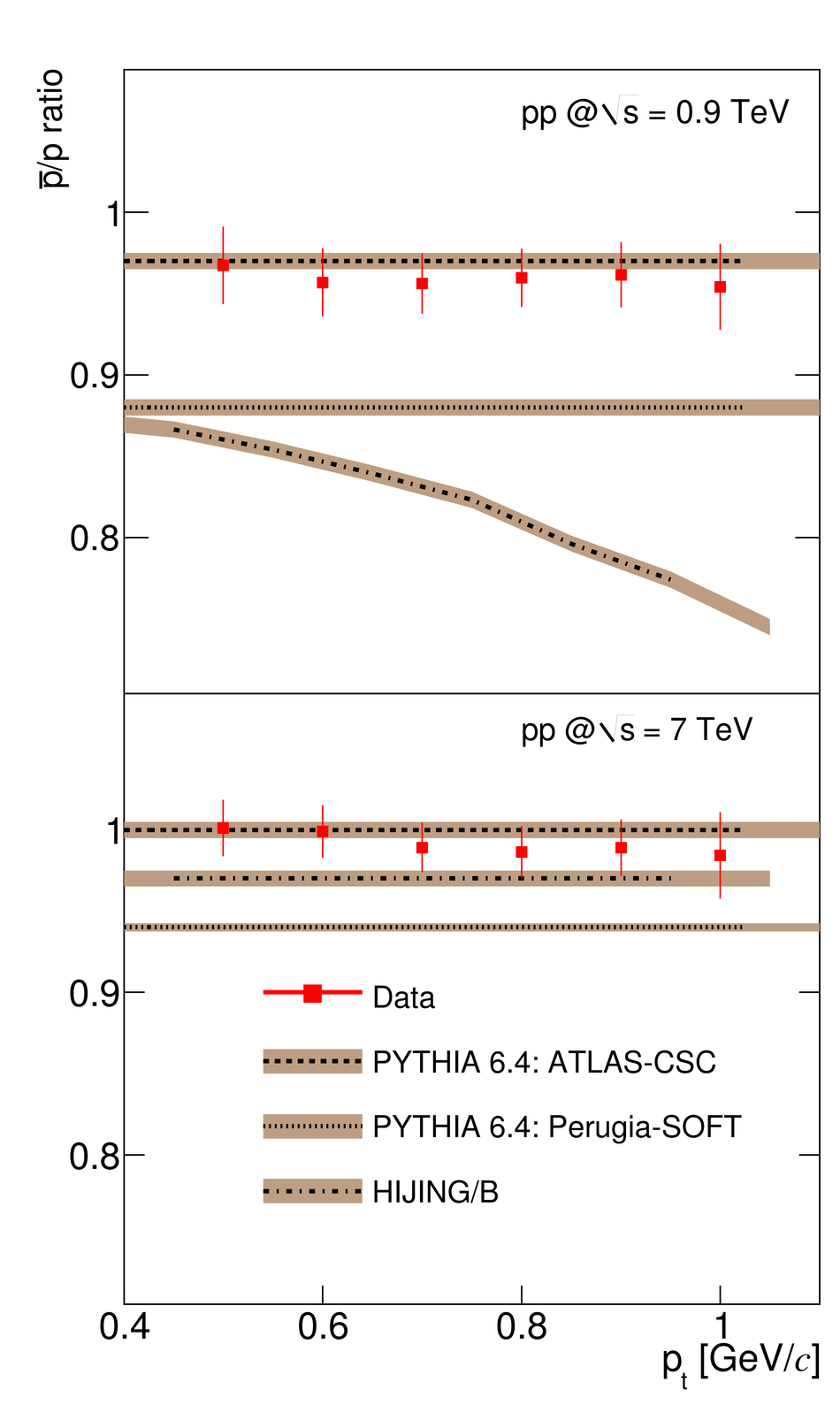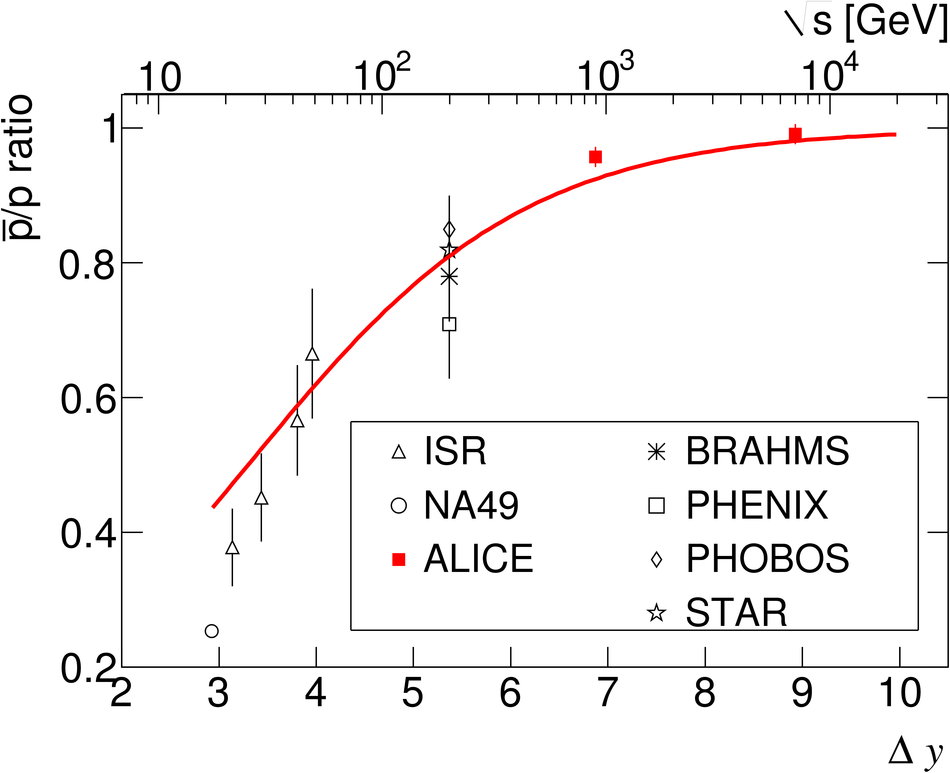The ratio of the yields of antiprotons to protons in pp collisions has been measured by the ALICE experiment at $\sqrt{s} = 0.9$ and $7~$TeV during the initial running periods of the Large Hadron Collider(LHC). The measurement covers the transverse momentum interval $0.45 <~ p_{\rm{t}} <~ 1.05$~GeV/$c$ and rapidity $|y| <~ 0.5$. The ratio is measured to be $R_{|y| <~ 0.5} = 0.957 \pm 0.006 (stat.) \pm 0.014 (syst.)$ at $0.9$~TeV and $R_{|y| <~ 0.5} = 0.991 \pm 0.005 (stat.) \pm 0.014 (syst.)$ at $7~$TeV and it is independent of both rapidity and transverse momentum. The results are consistent with the conventional model of baryon-number transport and set stringent limits on any additional contributions to baryon-number transfer over very large rapidity intervals in pp collisions.
Phys. Rev. Lett. 105 (2010) 072002
HEP Data
e-Print: arXiv:1006.5432 | PDF | inSPIRE
CERN Record




